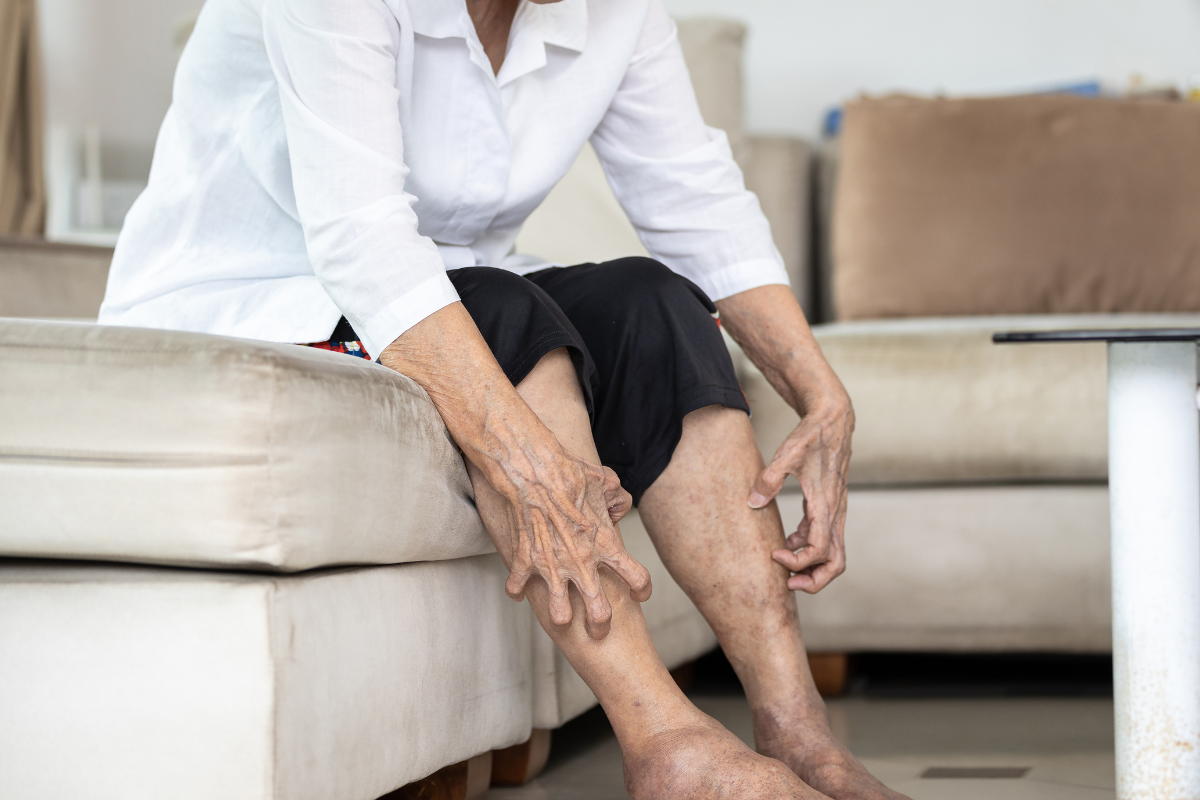Treating Pruritus at End of Life

Pruritus (itching) is an irritating sensation that provokes an urge to scratch. It’s a fairly common symptom near the end of life. Understanding this symptom can help you treat it more effectively to provide comfort to the patient.
Common Causes of Pruritus
While the first guess for a cause may be an allergy, not all itching is histamine related. Some of the other causes are serotonin, prostaglandins, kinins, proteases, and physical stimuli. This means antihistamines are not always going to work successfully to relieve pruritus.
Common causes of pruritus include:
- Skin: dryness, moisture (sweat), eczema, psoriasis, other irritations
- Disease states: hepatic failure, renal failure, hypothyroidism
- Blood disorders: iron deficiency, polycythemia, thrombocytosis, leukemia, lymphoma
- Medications: opioids, aspirin, drug reactions
- Infections: scabies, lice, candida
- Allergic reactions: urticaria, contact dermatitis, drug reactions
- Emotional/psychological
- The Itch-Scratch Cycle – scratching leads to damage which results in more itching.
The mainstay of treatment is to eliminate the cause, when possible, as well as skin hydration.

Treating Pruritus
Moisturizers are always the first step in treating pruritus from head to toe. Moisturizers that are emollient such as Aveeno, Aquaphor, or Vaseline are best for seriously dry skin. These can be applied after bathing for maximum effectiveness.
For a mild itch, cooling agents with menthol will provide relief. Even cold compresses can be helpful.
Antihistamines (diphenhydramine, cetirizine) help relieve itching when it’s associated with histamine release. Remember, not all pruritus is associated with histamine release.
Topical corticosteroids are helpful if there is skin inflammation. Choose an ointment instead of a cream for dryness. Oral corticosteroids may be needed in severe cases with skin inflammation.
Antidepressants can be effective for pruritus depending on the source. Paroxetine and Mirtazapine can relieve itch from paraneoplastic-related pruritus; Sertraline works for pruritus related to chronic kidney disease and cholestasis.
Ondansetron can be effective for opioid-induced, cholestasis-induced, and renal-induced pruritus.
Cholestyramine is the first-line therapy for cholestasis-induced pruritus. Ondansetron and sertraline have some good evidence for success as well.
Gabapentin and pregabalin can be effective for uremic, neuropathic, and opioid-induced pruritus.
If you are concerned about pruritus in a patient, speak with their hospice care team so they can ensure it is addressed correctly.
DiGi Graham, Doctor of Pharmacy
Chief Corporate Pharmacist
Crossroads Hospice & Palliative Care
References:
- Textbook: Bruera, E., Higginson, I., Von Gunten, C. F., & Morita, T. (2015). Textbook of Palliative Medicine and Supportive Care, Boca Raton: CRC Press.
- 2. Ferris, F., Von gunten, C.F. Fast Facts and Concepts #37. Pruritus. May 2015.
Crossroads Hospice & Palliative Care provides care and support to terminally ill patients and their families. To learn more, please call us at 1-888-564-3405.
If you found this information helpful, please share it with your network and community.
Copyright © 2023 Crossroads Hospice. All rights reserved.




